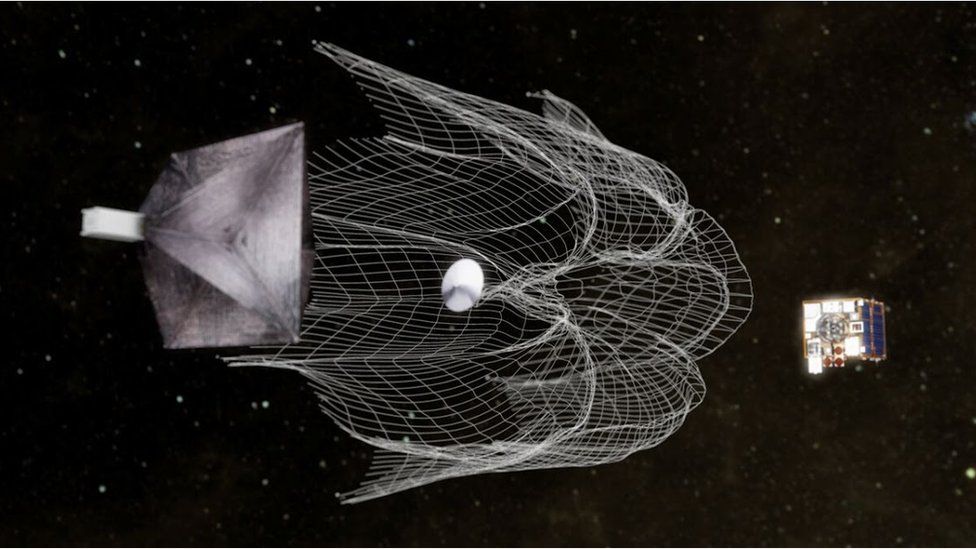Astronauts eject UK-led space junk demo mission
- Published

A UK-led project to showcase methods to tackle space junk has just been pushed out of the International Space Station.
The RemoveDebris satellite was ejected a short while ago with the help of a robotic arm.
The 100kg craft, built in Guildford, has a net and a harpoon.
These are just two of the multiple ideas currently being considered to snare rogue hardware, some 7,500 tonnes of which is now said to be circling the planet.
This material - old rocket parts and broken fragments of spacecraft - poses a collision hazard to operational satellites that deliver important services, such as telecommunications.
The £13m RemoveDebris spacecraft was taken to the ISS in April and stored onboard ahead of Wednesday's release.
The spacecraft was pushed out of an airlock where a robotic arm then picked it up gave it a gentle nudge down and away from the 400km-high lab.
In the process, RemoveDebris became the largest satellite to ever be deployed from the International Space Station. The time was about 12:35 BST.
Ground controllers in Guildford were hoping to pick up a signal from the spacecraft a couple of hours later as it passed over the UK.
"In the first month, month-and-a-half, we will spend our time checking the health of the satellite," said principal investigator Prof Guglielmo Aglietti from the Surrey Space Centre, University of Surrey.
"Once we know all its systems are behaving properly - only then will we begin our experiments," he told BBC News.
RemoveDebris carries its own "junk" - two small "cubesats" that it will eject and then track. For one of these, the "mother" satellite will demonstrate the laser ranging (Lidar) and camera technology needed to monitor and characterise debris in orbit; for the the other cubesat, it will actually try to snare the object with a net.
There will also be a demonstration of a small harpoon.
For this, the RemoveDebris satellite will extend a boom with a target on the end. A sharp projectile will then be fired at the plate to learn more about how such devices move and impact a surface in micro-gravity.
At the end of its mission, RemoveDebris will endeavour to avoid becoming a piece of junk itself by deploying a large membrane.
This "sail" will increase the drag from air molecules high in the atmosphere and act to pull the satellite down to Earth much faster than would otherwise be the case.
Half the funding for RemoveDebris comes from the European Commission; the other half comes from the 10 companies and institutes that contributed technology - including Surrey Satellite Technology Limited, from where the mission will be overseen.
The junk hardware in orbit represents a collision hazard
Jonathan.Amos-INTERNET@bbc.co.uk and follow me on Twitter: @BBCAmos